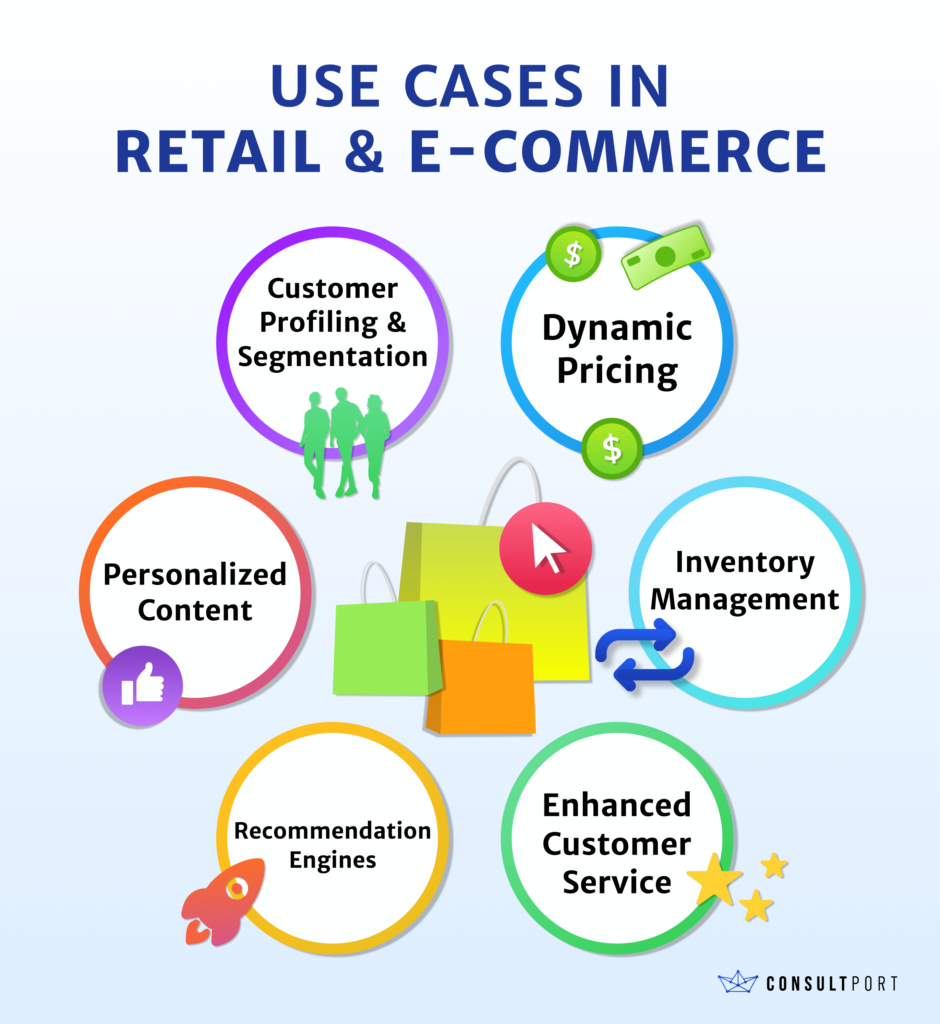Leveraging Data-as-a-Service for Enhanced Personalization in Retail and E-commerce
Blog Categories:
Published:
October 3, 2023
Reading Time:
5 minutes

In the ever-evolving digital landscape of retail and e-commerce, personalization has become the holy grail. Customers now expect tailored experiences, product recommendations that resonate with their preferences, and interactions that feel genuinely catered to their needs.
To meet these expectations, retailers are turning to cutting-edge solutions, and one of the most powerful tools in their arsenal is Data-as-a-Service (DaaS).
In this blog post, we'll delve into the world of DaaS and explore its critical role in enhancing personalization for retail and e-commerce businesses.
To meet these expectations, retailers are turning to cutting-edge solutions, and one of the most powerful tools in their arsenal is Data-as-a-Service (DaaS).
In this blog post, we'll delve into the world of DaaS and explore its critical role in enhancing personalization for retail and e-commerce businesses.
Why DaaS for Personalization?
Before we dive into the specifics, let's understand why Data-as-a-Service is a game-changer in the realm of personalization.

- The Data Goldmine: Personalization thrives on data, and lots of it. DaaS provides a treasure trove of data from diverse sources, including social media, purchase histories, and online behavior. This comprehensive data pool forms the foundation for crafting highly personalized experiences.
- Real-time Insights: DaaS solutions offer real-time data analysis capabilities. In today's fast-paced digital world, the ability to gather and interpret data in real-time is invaluable. It enables businesses to respond to customer preferences and trends as they happen, not after the fact.
- Scalability and Flexibility: Retail and e-commerce businesses experience fluctuating data volumes, especially during peak shopping seasons. DaaS platforms can seamlessly scale up or down, ensuring you have the computing power needed for personalization, no matter the demand.
- Cost Efficiency: Building and maintaining an in-house data infrastructure can be cost-prohibitive. DaaS eliminates the need for heavy upfront investments in hardware and software, making personalization accessible to businesses of all sizes.
- Data Security and Compliance: DaaS providers are well-equipped to handle data security and compliance issues, including GDPR and CCPA. This allows retailers to focus on leveraging data for personalization while leaving the complexities of data governance to experts.
KEY TAKEAWAYS
- Customers now expect tailored experiences, product recommendations aligned
Use Cases in Retail and E-commerce
Now that we've established the importance of Data-as-a-Service for personalization, let's explore some practical use cases in the retail and e-commerce sectors.

For instance, if a customer frequently purchases outdoor gear, a retail website can showcase hiking boots and camping equipment as soon as they log in.

Customer Profiling and Segmentation:

For instance, if a customer frequently purchases outdoor gear, a retail website can showcase hiking boots and camping equipment as soon as they log in.
Dynamic Pricing:
Personalized Content:
Inventory Management:
Recommendation Engines:
Enhanced Customer Service:
Unlocking Retail Success with Consumer Data and Predictive Analytics
In a rapidly evolving retail landscape, understanding and satisfying customer needs have become paramount. An IBM study found that 93% of CEOs prioritize better understanding and delivering what customers want. Additionally, an Accenture study reveals that 83% of consumers are willing to share data to receive hyper-personalized experiences.
To create seamless shopping journeys, retailers must align products, placements, promotions, and interactions. Vast amounts of data, from various sources, flood into retail systems. This data, when effectively analyzed using Data-as-a-Service, can usher in a new era of retailing, aligning with customer desires and unveiling profitable trends.
Retailers can enhance marketing efforts by precisely targeting customers with timely, relevant offers, ensuring each interaction is profitable. Extracting insights from data allows a better understanding of trends, products, and promotions, driving returns on investments.
Key areas for retailers to focus on include product sales trends, purchasing preferences, marketing efficiency, customer loyalty, and individualized customer experiences.

To create seamless shopping journeys, retailers must align products, placements, promotions, and interactions. Vast amounts of data, from various sources, flood into retail systems. This data, when effectively analyzed using Data-as-a-Service, can usher in a new era of retailing, aligning with customer desires and unveiling profitable trends.
Retailers can enhance marketing efforts by precisely targeting customers with timely, relevant offers, ensuring each interaction is profitable. Extracting insights from data allows a better understanding of trends, products, and promotions, driving returns on investments.
Key areas for retailers to focus on include product sales trends, purchasing preferences, marketing efficiency, customer loyalty, and individualized customer experiences.
Predictive Analytics and Consumer Data Revolutionize Retail
Predictive analytics, powered by machine learning and AI, revolutionizes retail by understanding and measuring factors influencing consumer satisfaction. It assigns scores to customers, anticipating their desires before they even realize them.Moreover, it enables organizations to foresee and address customer experience issues, gain a competitive edge, and identify new prospects.
McKinsey reported that personalization at scale results in a 1 - 2% increase in total sales for grocery companies and higher lifts for other retailers, increasing loyalty and share-of-wallet among already-loyal customers.

Implementing predictive analytics in retail begins with analyzing customer behavior and demographics. By understanding behavior across channels, retailers can offer targeted, highly personalized in-store and online experiences.
For example, Amazon uses predictive analytics to tailor online shopping. Retailers with physical stores can also employ predictive analytics to provide real-time, personalized offers, incentivizing frequent purchases and boosting sales across all channels.
In essence, predictive analytics helps retailers attract high-value customers and unlock retail success in the digital age.
Shaping The Future of Service
The retail and e-commerce landscape is evolving at an unprecedented pace, and customer expectations are soaring. Personalization is no longer a luxury but a necessity for businesses looking to thrive in this digital era.
Data-as-a-Service emerges as the linchpin of personalization, providing the data-driven insights and capabilities needed to cater to individual customer needs effectively.
For consultants and businesses in the retail and e-commerce sectors, the message is clear: Data-as-a-Service is not just a buzzword; it's a potent tool for enhancing personalization and staying competitive in today's dynamic market.
The question is not whether to leverage DaaS but how to do it effectively to provide the personalized experiences that modern customers demand.
Consultport is a simple and effective platform for you to find data analytics experts in data strategy, business intelligence, data science, and much more. You can hire from Consultport's pool of experts to solve your critical data analytics challenges today.
Data-as-a-Service emerges as the linchpin of personalization, providing the data-driven insights and capabilities needed to cater to individual customer needs effectively.
For consultants and businesses in the retail and e-commerce sectors, the message is clear: Data-as-a-Service is not just a buzzword; it's a potent tool for enhancing personalization and staying competitive in today's dynamic market.
The question is not whether to leverage DaaS but how to do it effectively to provide the personalized experiences that modern customers demand.
Consultport is a simple and effective platform for you to find data analytics experts in data strategy, business intelligence, data science, and much more. You can hire from Consultport's pool of experts to solve your critical data analytics challenges today.
Share This Story, Choose Your Platform!



